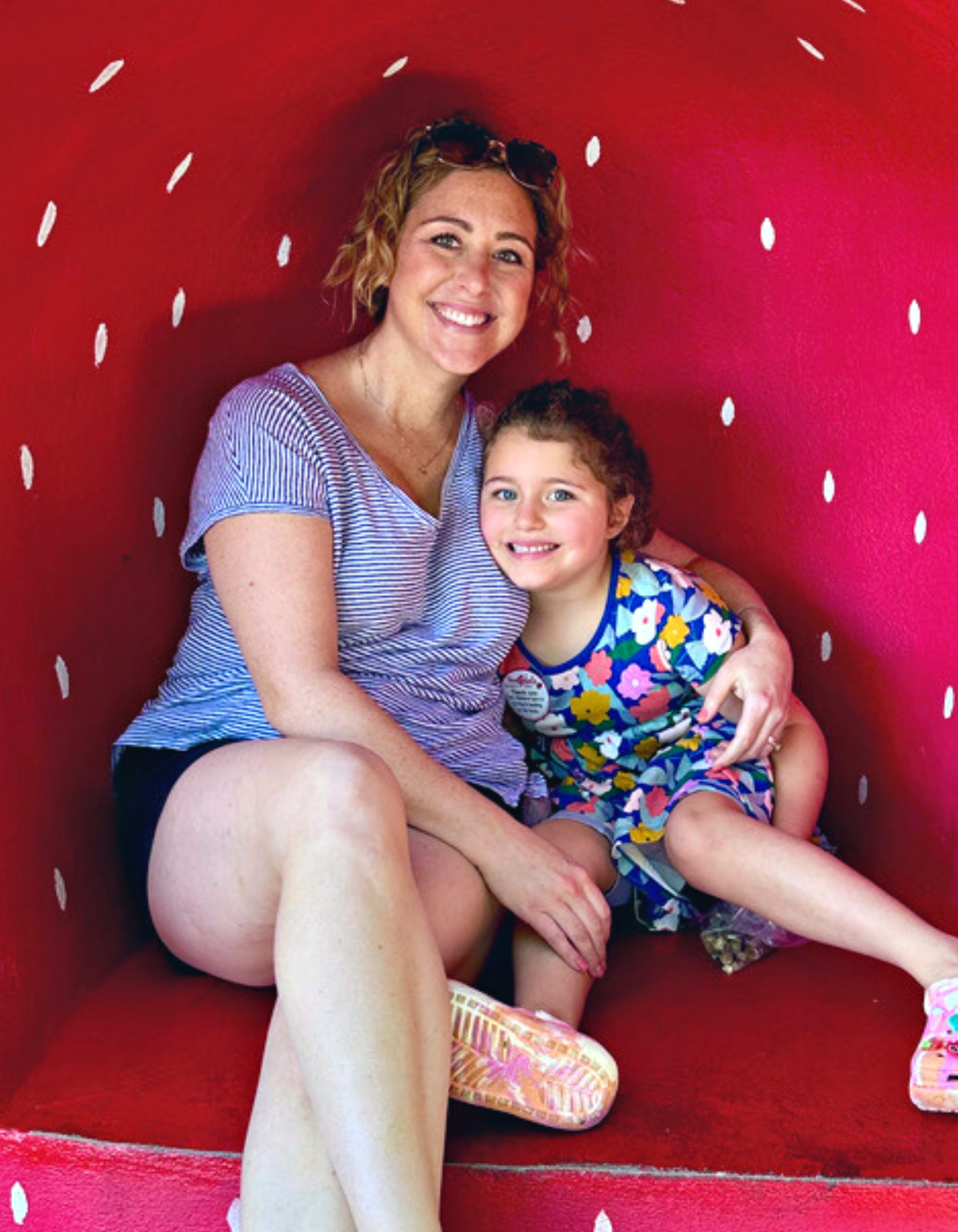This blog post is written by Lindsey Bendat, an Emerge parent who is starting her own sensory-friendly clothing business! You can help her with product development and testing by filling out the survey using the buttons below. The first 20 people to complete the survey will receive a $5 Amazon gift card and every submission is entered into a $75 drawing!
My Story
As a parent of an autistic child, I’ve experienced firsthand the challenges that sensory sensitivities can present. My daughter’s journey with autism includes both auditory and tactile sensitivities, which have made everyday tasks like getting dressed and participating in social activities a struggle. It became my mission to create clothing that not only she would love but that would also help eliminate or reduce these daily challenges. This personal experience inspired me to dive into the world of sensory-friendly clothing, a domain that is still relatively new for many parents and caregivers. With this blog post, I want to share my story and provide an informative, casual guide to sensory-friendly clothing for anyone starting to learn about it.

At the end of this post, you’ll find a link to a survey on tactile sensitivity that I encourage you to participate in, as your input will help us better understand and cater to the unique needs of children with sensory sensitivities.
Understanding Tactile Sensitivity
Children with sensory sensitivities have a unique set of preferences and needs when it comes to clothing. Sensory sensitivities can be associated with various neurodivergent conditions such as autism, ADHD, or sensory processing disorder. However, sensory sensitivities can also affect children who do not have a specific diagnosis. The key is to recognize and respect these individual differences and strive to provide the most comfortable and supportive environment for each child. Tactile sensitivity, also known as tactile defensiveness, refers to the heightened sensitivity to touch, texture, or pressure. Children with tactile sensitivities might feel overwhelmed or irritated by certain clothing materials, seams, tags, or even the tightness of their garments. This can lead to discomfort, meltdowns, and difficulties in daily routines, like getting dressed for school. A child’s reaction to sensory triggering or sensory overload can vary widely. Some children might experience emotional distress, anxiety, or even physical pain. Others might become more withdrawn, seeking a quiet and calm space to regain their sensory and emotional balance. Sensory and emotional regulation plays a crucial role in helping these children cope with their sensitivities and adapt to their environment. Providing clothing that caters to their unique needs can significantly contribute to their overall well-being and ability to self-regulate.
Benefits of Sensory-Friendly Clothing
Sensory-friendly clothing is specifically designed to cater to the unique needs of children with sensory sensitivities, addressing the features that may be lacking in traditional clothing. By incorporating elements that minimize discomfort and provide a soothing, comfortable experience, sensory-friendly clothing offers a range of benefits and adapts to the individual preferences and sensory needs of each child. Some of the key benefits and features of sensory-friendly clothing include:
- Soft, comfortable materials: Made with gentle, skin-friendly fabrics that minimize irritation and provide a pleasant tactile experience.
- Tagless and seamless designs: Eliminating tags and using seamless construction to reduce the potential for irritation and discomfort.
- Smooth seams: Incorporating seamless or smooth seams that eliminate rough edges and reduce discomfort for a better wearing experience.
- Thoughtful details: Attention is given to features such as waistbands, necklines, fasteners, roomy openings, pockets, and fidget loops to ensure they are comfortable, non-restrictive, and cater to individual sensory needs.
- Adaptive or adjustable fasteners: Simplifying dressing and undressing with the use of Velcro or magnetic closures.
Sensory-friendly clothing provides numerous benefits, including increased comfort, reduced anxiety, improved focus, and enhanced self-esteem. When children feel comfortable and supported in their clothing, they can better navigate their world and thrive!
Inclusivity & Sensory-Friendly Clothing
Sensory-friendly clothing is a vital component of the inclusivity movement, acknowledging the unique needs and preferences of children with sensory sensitivities. As a parent on this journey, I’ve discovered the profound impact that this clothing has in providing comfort, support, and a sense of inclusion for our children. Embracing the beauty of our differences and celebrating the power of comfort-driven freedom is essential in creating a more inclusive world for all. Sensory-friendly clothing is a significant step in that direction, ensuring that every child has the opportunity to feel comfortable, supported, and empowered. As we move forward, it is crucial to continue raising awareness about sensory sensitivities and advocating for the creation of clothing that caters to a wide range of sensory needs and preferences. By sharing information, tips, and resources, we can help patients, caretakers, and the larger community better understand sensory sensitivities and support the children in their lives.
We hope you’ve found the information in this post useful and insightful. We kindly ask that you take a few moments to complete the tactile sensitivity survey linked below. Your feedback will be instrumental in helping us better understand the needs of children with sensory sensitivities and improve our sensory-friendly clothing solutions. Together, we can create a more inclusive and comfortable world for every child. Thank you for your valuable contribution!

0 Comments